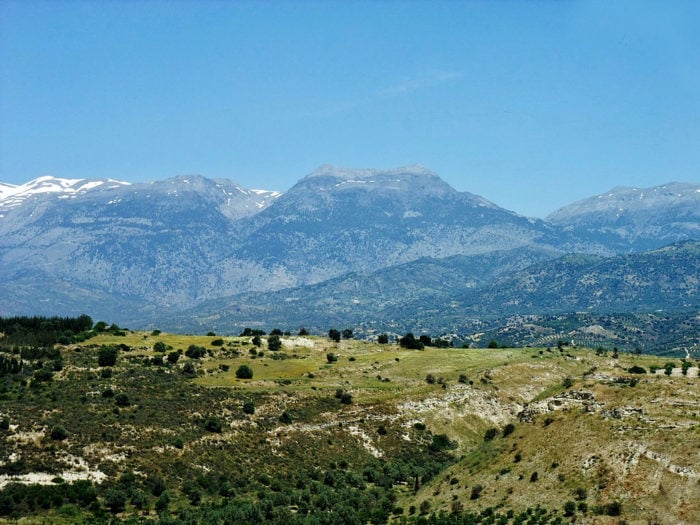
Rizitika songs are the oldest type of music in Crete, originating from the western part of the Greek island but now heard in central and eastern Crete, as well.
Rizitika, which are sung mostly a capella, or without instruments, in the mountains of Crete by a group of men tell stories about events that took place as long as nine hundred years ago.
The origin of these songs, resembling the epic poems of old, which as we know, were often sung, is unknown. Yet, they seem to be rooted at least as far back as Byzantine times and were continued through the Venetian domination of the island.
The word rizitika (ριζίτικα) derives from the word ρίζα (root) and could be translated as “root songs,” relating the stories of the past with serious sections which have elements of pain and loss.
Another view is that rizitiko (singular) derives from the root (foot) of Psiloritis Mountain.
An important characteristic of rizitika is the peculiarity of its melodies since the songs have no formal structure or style.
Rizitika themes
Rizitika are essentially oral histories and traditions that are passed down to the next generation in song.
A characteristic rizitiko is a serious song which revolves around painful subjects, namely the pain of love, the agony of death, or the mourning of a lost one.
Some rizitika are lighter, however, including songs sung at the table or along the road while they are also sung at weddings, baptisms, and other celebrations.
In some cases, the subject is heroic, relating the many stories of those who fought the Greek revolution against the Ottomans, or of other historical figures.
Rizitika can also be allegories or contain themes dealing with exile, religion, love, or nature while there are a variety of others, as well.
Rizitika are not for dancing
These particular Cretan songs are not made to be danced to. They are sung in 32 melodies with refrains or half a verse first sung by the lead singer and then repeated in chorus form.
Rhyming is not essential and the verse is not always fifteen syllables. Rizitika are rarely accompanied by lute, violin, or lyre like other traditional music of Crete.
Nowadays, Cretan songs that are not actual rizitika are often confused with the real thing and they are sung on many different social occasions.
Monumental rizitika songs
Some rizitika have become cornerstones of music from Crete. One of these is “Digenes,” which speaks about the fearless Cretan heart.
Digenes is dying, and the earth is terrified
and the grave slab shudders, how is it going to cover him?
Because from where he lies, mighty words he utters.
—If the earth had treads and the sky had grips
I would step on the treads, I would grab the grips
to climb up to the sky, to sit there,
to shake the heavens.
Another rizitiko about the Cretan War of 1644 to 1669 testifies to the discord among the Christians during the war.
It is a historic theme that explains the mass conversions to Islam that followed the fall of the castle in 1669.
Castle, where are your towers and your belfries
and where are your braves, your fine lads?
My own braves, the fine lads of mine
the black earth enjoys them, in the stygian Hades.
I have no wrath for Turks, neither rage for Charon,
I only have wrath and rage for the traitor
who betrayed them.
The best known rizitiko, however, tells the grim story of a sixteenth century vendetta between the Giannaris and the Mousouros families:
Jesus, I will gird the sword and I will grab the spear
I will step down to Omalos to the passage of Mousouros
to pull out the silver sword and the golden spear
to make mothers without sons, women without men.
A different version of the song appeared in the twentieth century with new lyrics speaking about war and political struggle:
When will the skies have stars again, when will [it] be February
to take my rifle, the beautiful bandolier
to step down to Omalos, to the passage of Mousouros
to make mothers without sons, women without men.


















